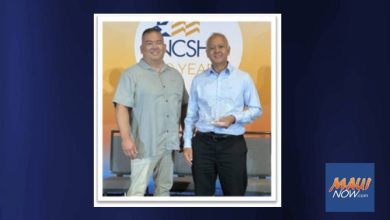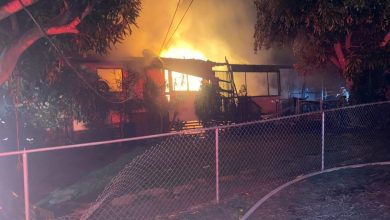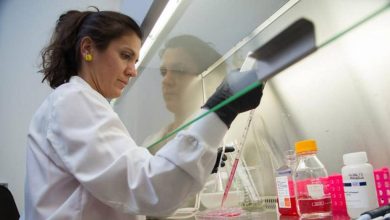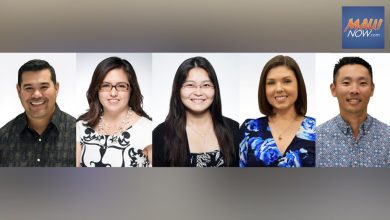Hawaiʻi sees improvement in math scores, maintains previous gains in language arts, science : Maui Now

[ad_1]

Hawai‘i public schools saw an overall improvement in mathematics performance in the second full academic year following the pandemic.
The information was compiled as part of a statewide assessment released by the Hawaiʻi State Department of Education. The document is part of the department’s annual Strive HI Performance System report.
In language arts and science, Hawai‘i scores held steady, maintaining gains from the year before.
While Hawai‘i’s student performance has not yet reached pre-pandemic levels, students are doing relatively well compared to students in other states, according to the department.
Compared to 11 other states that have reported Smarter Balanced Assessment results for the 2022-23 school year, Hawaiʻi is tied with Idaho for the highest proficiency rate in language arts and is one of four states that saw a 2-point or greater year-over-year gain in math proficiency.
Key year-over-year 2022-23 Strive HI results
- Statewide academic proficiency in language arts, math and science remained stable for language arts and science, and increased for math.
- Language arts proficiency held at 52%.
- Math proficiency increased by 2 points to 40%.
- Science proficiency held at 40%.
- Third-grade literacy (reading near/at or above grade level), decreased by 2 points to 78%.
- Ninth-grade on time promotions increased by 3 points to 92%.
- Percentage of 12th graders completing a Career and Technical Education (CTE) program held at 64%.
- On-time graduation rate decreased by 1 point to 85%.
- College-going rate continued to be at 50%.
“It’s very promising to see how Hawaiʻi compares to other states. While there is a lot more progress that we want to see for our students and state, Hawai‘i’s pandemic recovery is continuing at a better pace than many states,” Superintendent Keith Hayashi said. “Our dedicated educators have worked hard to counteract the effects of the pandemic and we will continue to invest in and accelerate the strategies that are positively impacting our students.”
Student attendance also improved with fewer students being chronically absent (15 days or more): down to 30% in SY 2022-23 compared with 37% the year prior. However, as with national trends, student absences continue to be high. Two years ago, statewide chronic absenteeism rates had gone from 18% to 37% as a result of quarantine and isolation requirements during COVID, the statewide bus driver shortages, and the US Navy emergency fuel storage leak situations.
“When students are absent, they miss out on social and academic opportunities. School attendance is critical to preserve the connectedness between students and their school environment,” Deputy Superintendent Heidi Armstrong said. “Schools counselors, administrators, school-based behavioral health staff, homeless concern liaisons and others continue to support student attendance through outreach and support that is responsive to communities.”
In addition to getting students back into the classroom, the Department continues to focus on improving learning outcomes for all students. The Department has been sharing its strategies and progress on achieving desired outcomes in the Board of Education’s Strategic Plan. The Department has presented to the Board on five of the 27 desired outcomes to date.
Kīlauea Elementary
Kīlauea Elementary on Kauaʻi exceeded statewide trends, increasing academic proficiencies across all subjects. From school year 2021-22 to 2022-23, scores for language arts increased by 14 points to 62%, math increased by 16 points to 49%, and science increased by 35 points to 67%.
The academic gains have gone well-above pre-pandemic proficiencies, putting the school above elementary complex area and statewide averages in language arts and science, and on-par for math. The school’s third grade literacy level was 97%, increasing 12 points from the year prior and surpassing statewide averages by 19 points.
Principal Fig Mitchell, who was new to the position during the 2022-23 school year, attributes the school’s academic gains to the staff and community. “Establishing a culture of support for staff and students, and having stability among staff members was a big factor,” Principal Mitchell said. “We also tried to implement a culture of ‘we can do hard things’ at our school and the students pulled through.”
The school utilized ESSER funds to implement a new rigorous math curriculum during the 2022-23 school year, which involved providing comprehensive professional development for teachers. Professional development for math continues to be a priority for Principal Mitchell this school year. Additionally, the school’s response intervention coach became LETRS trained and shared best practices and resources with other staff members. Kīlauea is now looking at a schoolwide implementation of the science of reading and will be focusing on further increasing the quality of reading instruction. The school started to implement more small group instruction and active participation in classes to ensure that students are engaged and learning cohesively.
An improvement in attendance was also likely the overarching variable contributing to the positive results. For the 2021-22 school year, Kīlauea’s chronic absenteeism rates rose to 51% from the previous year’s 11%. During the 2022-23 school year, the school reinforced attendance policies and implemented parent conferences, cutting chronic absenteeism rates to 35%, a vast improvement to getting students back in the classroom.
Kaimukī Middle
Kaimukī Middle on Oʻahu, which has a long-standing reputation for strong Strive HI performance, saw significant increases across all subjects, outperforming pre-pandemic scores. For the 2022-23 school year, the school increased 5 points in language arts to 81%, 6 points in math to 70%, and 6 points in science to 70% year over year. The school has surpassed state and complex area proficiencies for middle schools by double-digits. Eighth grade literacy levels also increased 7 points to 93% compared to the state’s 72%.
Principal Frank Fernandes, in his 36th year at the school, called this year a landmark year that broke the pattern of a stubborn student achievement gap, factoring into the overall increase in school proficiencies. “Reducing the academic gap at our school has not happened before,” he said. “Usually you see one area go up and other areas dip, but to see language arts, math and science all go up was really gratifying… it is a respective culmination of all our school’s work and shows us that we can renew our efforts going forward.”
Principal Fernandes and his leadership team note the pandemic as a catalyst for the school’s academic progression, making it a point to build upon all the positive aspects rather than going back to pre-pandemic operations. As an example, the school decided to keep an emphasis on technology and utilized ESSER funds to ensure that all students were equipped with a Chromebook going forward. Also, to meet social distancing guidelines during lunches, the school altered its bell schedule to having separated grade-level lunch periods. This change left students with extra study hall time that eventually developed into what the school calls “STAR Time” or school-wide differentiated academic support time for all students — an initiative that became integral in helping to close learning gaps.
Kaimukī’s leadership team emphasized the school’s intentional, data-driven systems and staff’s collective efficacy as other major factors in the school’s academic development. While professional development was always a priority, the administration team attempted to streamline the application of all professional development through overarching themes of academic discourse and student engagement. Learning walks — where teachers visit other teachers’ classrooms to observe strategies and apply learning — take place twice a year for each teacher, providing all staff with a foundational alignment of effective teaching.
“We’re hopeful that this is a step toward even more improvement,” Principal Fernandes said.
Strive HI was launched in the 2012-13 school year as the state’s locally designed school improvement and accountability system that offered flexibility from the former federal No Child Left Behind (NCLB) law. It includes multiple measures of school performance including proficiency in science, math and language arts/literacy; achievement gaps; chronic absenteeism; academic growth; and graduation rates.
The system was modified in 2017 to align with the 2017-2020 HIDOE/BOE Strategic Plan and reauthorization of federal education law under the Every Student Succeeds Act (ESSA).
Next year’s 2024 report will include updated measures that reflect new key performance indicators under the 2023-2029 BOE Strategic Plan.
School-level reports are posted on the ARCH database. Click here to view the 2022-23 State Snapshot of Strive HI indicators.
[ad_2]
Source: Maui News




